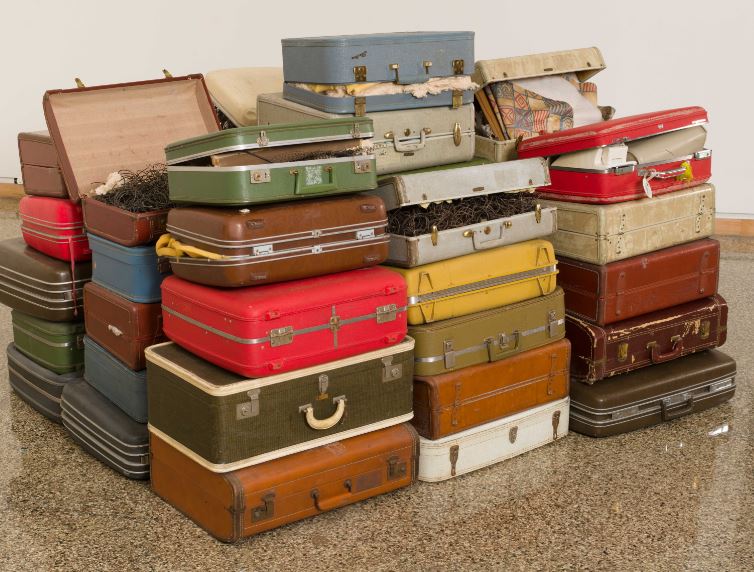
This chart greets travelers at boarding gates for international flights at Seattle-Tacoma International Airport (SEA).
No doubt, there’s something that looks like this at your airport too.
The chart lists the maximum dimensions – including handles and wheels – of the under-seat and carry-on bags for each airline that flies out of this airport.
And the chart is so busy because the maximum measurement for each airline can be a wee bit different.
Fly on Alaska Airlines, United Airlines, or Virgin Atlantic, and the carry-on bag limit is 22 inches X 14″ inches by 9 inches. Board a Finnair, Lufthansa, or Turkish Airline flight and, according to this chart, your bag must not exceed 22 inches X 16 inches X 9 inches.
What happens if your bag exceeds the maximum size dimensions allowed by your airline?
Often nothing.
But if gate agents for what is sure to be a full flight start measuring bags, or when push comes to shove when there’s no more room in the overhead bins for everyone’s bag, the suitcase that’s an inch or two over the official measurement will likely be the one that gate agents declare needs to be checked.
Often at the passenger’s expense.
Avoid being ‘that person’ by checking your airline’s size restrictions for carry-on bags and measuring yours before you leave home. If your bag just meets the guidelines or, better yet, is a wee bit smaller, jot down your measurements in case you’re challenged.
Tucking a tiny retractable or foldable cloth ruler in your pocket wouldn’t hurt either.

And while you’re at it. Check to see if there are weight restrictions for carry-on bags too.
Have you had a carry-on bag rejected because it was a wee too big? Tell us the story.
